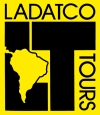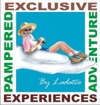

Destinations
Experiences
 |
L A
D A T C O T O U R
S |
 |
||||||||
| HOME | South America | Falkland Islands | Antarctica | Unique Destinations |
Unique Experiences |
Newsstand | ||||
|
The Northwest of Argentina |
|
ABOUT THE NORTHWEST OF ARGENTINA
This area is still very much a hidden treasure of Argentina (and for sure our favorite area). The charm and the character of this area lies in the culture and folklore of its people, in the architecture of its small towns, in the traditions and customs present in its markets, its food, its music and its religious festivities. A mix of Pre-Columbian civilizations (it was the southernmost outpost of the Inca Empire) and Spanish colonial past (the city of Salta, the gateway city to visit this area, is the best preserved Spanish colonial city in Argentina). The landscapes are breathtaking, with the Andes as background. Desert, cactus, high altitude salt lakes, llamas crossing the Puna... An incredible variety of colors, climates, activities, that never leaves you indifferent.
Day
1: Arrive Salta
Day 2: Salta
– Cuesta del Obispo – Parque Nacional Los Cardones – Cachi
After breakfast, depart to enjoy the surprising landscape of
the Escoipe Gorge, linking the Lerma and Calchaqui Valleys and the curious shapes
and shining colours all the way up Cuesta del Obispo to Piedra de Molino. Then
follow the Recta del Tin Tin to the Los Cardones National Park, rich in cactus and other
local plants. Cachi is a quaint colonial village with an XVII century church and an
archeological museum.
Day 3: Cachi
– Quebrada de las Flechas – Cafayate
Heading south (Road 40) and on the way to Cafayate, we go thought the breathtaking
Quebrada de las Flechas, a curious arrow-like formation in an eerie and almost lunar
surface. On the way to Cafayate will well visit these locations which can't be missed -
Seclantás and Molinos. We stop at Seclantas to visit artisan weavers in their
own homes to see how they create, manufacture and weave: handwoven blankets, cloths,
ponchos, rugs and also to see their artisan's center created for themselves. And at
Molinos, you can visit the church, which is part of a bigger complex that also includes
the elegant Governor’s House. Don Nicolás Severo de Isasmendi, the last royalist
governor, used to live there. There is also the Criadero Coquena, the first breeding site
for endangered vicuñas, where anials live in semi-captivity. In the area are
Colomé, Tacuil and Humanao, fast becoming famous for their high vineyards, situated at
over 2600 metres above sea level. Enjoy lunch at Bodega Colome before continuing to
Cafayate and the lovely Patios de Cafayate for a visit
to their vineyards, wine tasting and overnight. (B/L)
Day 4:
Cafayate – Salta - Purmamarca
Morning departure for the return drive to Salta, enroute enjoying the unique landscape.
Make a stop at the amazing rock formations of the Anfiteatro and travel through the
breathtaking Quebrada de las Conchas, characterized by intense colors and spectacular
geological formations, determined by the concentration of different minerals in the soil.
Before reaching Salta, stop at Posta de las Cabras, a well known local restaurant
for a typical lunch and then continue on beyond Salta along the
road to Humahuaca following a deep canyon running 170km north to south. It is flanked by
mountains rich in minerals which lend their different colors to the rocks, making this
journey unforgettable. The province of Jujuy is the centre of Argentina’s mining
industry. Indian hamlets dot the landscape, each with its chapel adorned with indoamerican
religious objects and works of art. Late afternoon arrival to the charming Purmamarca, an attractive village in the gorge with its
“Cerro de 7 Colores” (Seven-Color-Mountain) aptly
named Painter’s Pallete for a two night stay at La Cormarca, Hotel Con Encanto. (B/L)
Day 5:
Purmamarca
Today visit Purmamarca and nearby Tilcara,
halfway along the Quebrada, is one of the most interesting villages. Close by there is an
archeological site where excavations of an Inca village have unearthed remains of stone
houses. Continue on to Humahuaca,
at a height of 3.000m, where the adobe houses are whitewashed with bright red roofs. The
church, La Candelaria, dates back to 1640 and is the starting point for the colorful
religious processions that bring the hamlet to life. All the inhabitants, in colorful
ponchos and hats, come out for the occasion and meet in the square opposite the church.
Time for lunch en route, with afternoon return to Purmamarca. (B)
Day 6:
Purmamarca - Salta & depart
Morning return drive of a little more than 100 miles to Salta's airport for your departing
flight. (B)